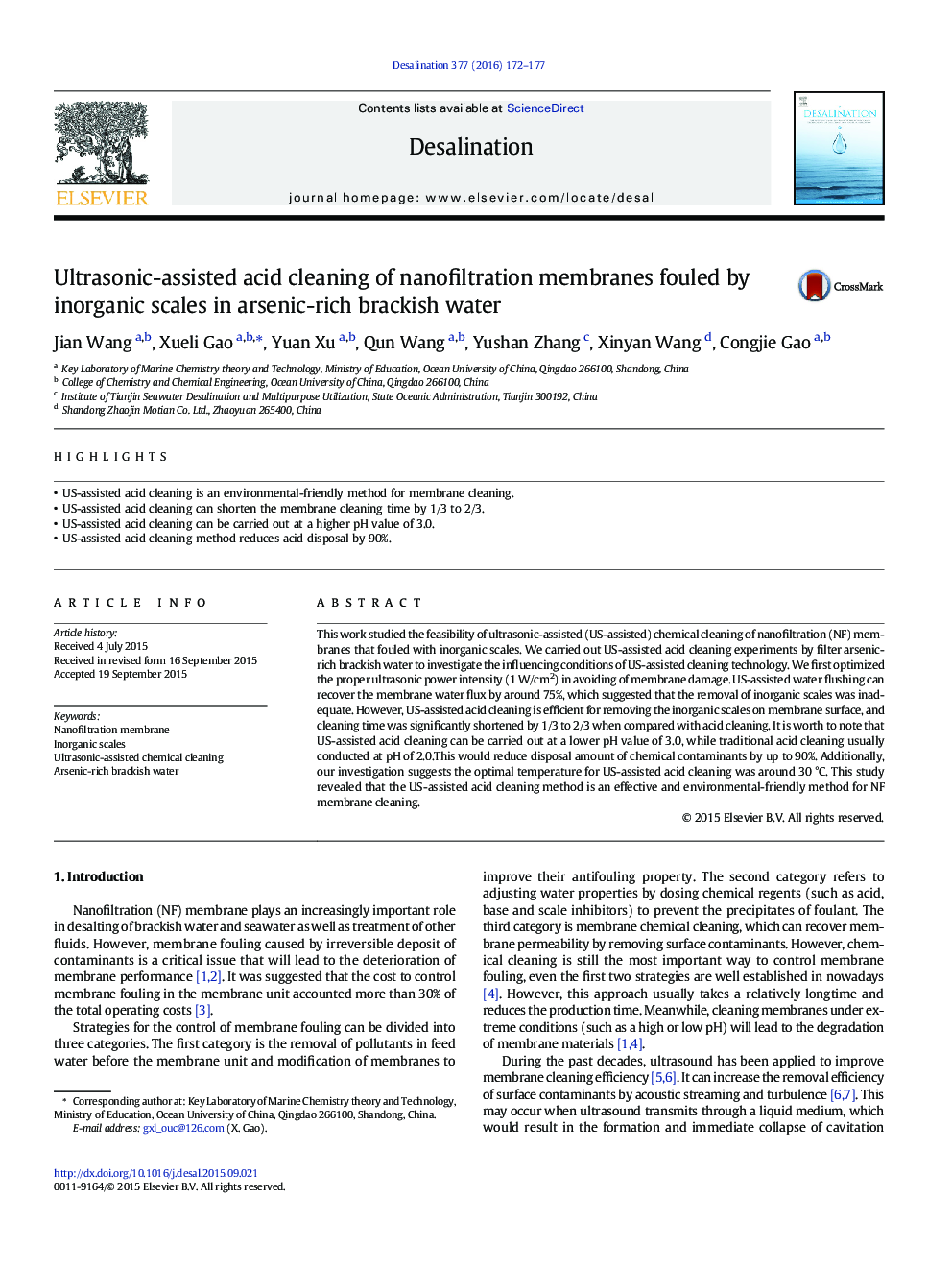| Article ID | Journal | Published Year | Pages | File Type |
|---|---|---|---|---|
| 623010 | Desalination | 2016 | 6 Pages |
Abstract
This work studied the feasibility of ultrasonic-assisted (US-assisted) chemical cleaning of nanofiltration (NF) membranes that fouled with inorganic scales. We carried out US-assisted acid cleaning experiments by filter arsenic-rich brackish water to investigate the influencing conditions of US-assisted cleaning technology. We first optimized the proper ultrasonic power intensity (1 W/cm2) in avoiding of membrane damage. US-assisted water flushing can recover the membrane water flux by around 75%, which suggested that the removal of inorganic scales was inadequate. However, US-assisted acid cleaning is efficient for removing the inorganic scales on membrane surface, and cleaning time was significantly shortened by 1/3 to 2/3 when compared with acid cleaning. It is worth to note that US-assisted acid cleaning can be carried out at a lower pH value of 3.0, while traditional acid cleaning usually conducted at pH of 2.0.This would reduce disposal amount of chemical contaminants by up to 90%. Additionally, our investigation suggests the optimal temperature for US-assisted acid cleaning was around 30 °C. This study revealed that the US-assisted acid cleaning method is an effective and environmental-friendly method for NF membrane cleaning.
Keywords
Related Topics
Physical Sciences and Engineering
Chemical Engineering
Filtration and Separation
Authors
Jian Wang, Xueli Gao, Yuan Xu, Qun Wang, Yushan Zhang, Xinyan Wang, Congjie Gao,
